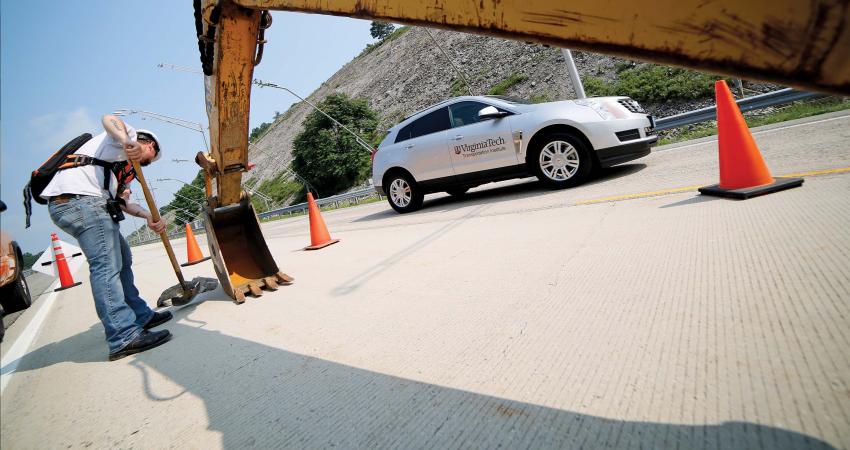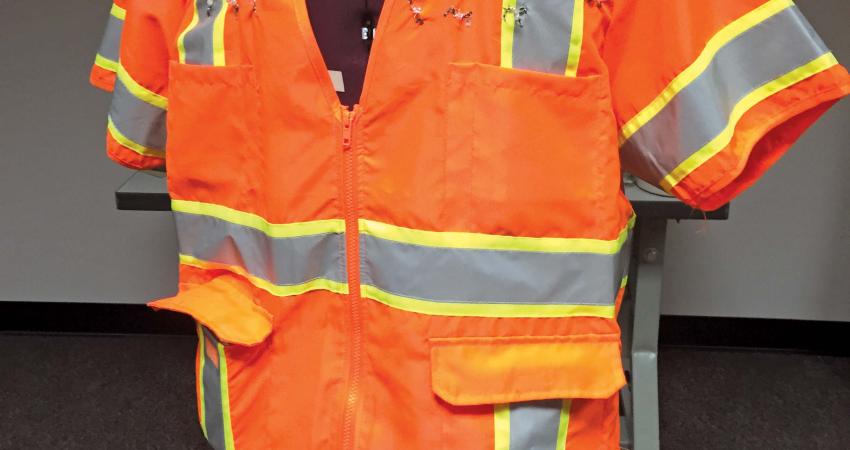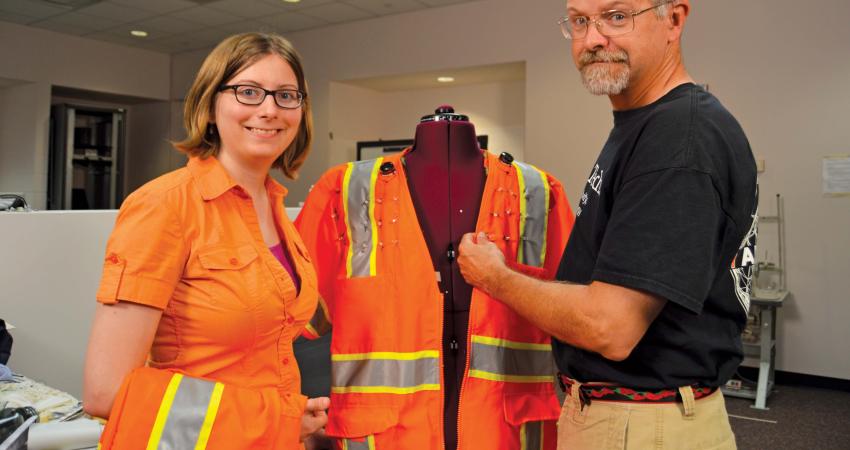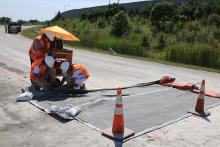A test stretch of road in the US is playing a valuable role in developing technology and boosting traffic safety -*Tom Gibson writes
Located a short distance from the Virginia Tech campus in the mountains of rural southwest Virginia in the mid-Atlantic region of United States, the Virginia Smart Road looks like a conventional road. But venturing to either end of the 3.5km-long thoroughfare reveals that it actually goes nowhere, at least for now.
The result of a plan conceived back in the 1980s, the Vi
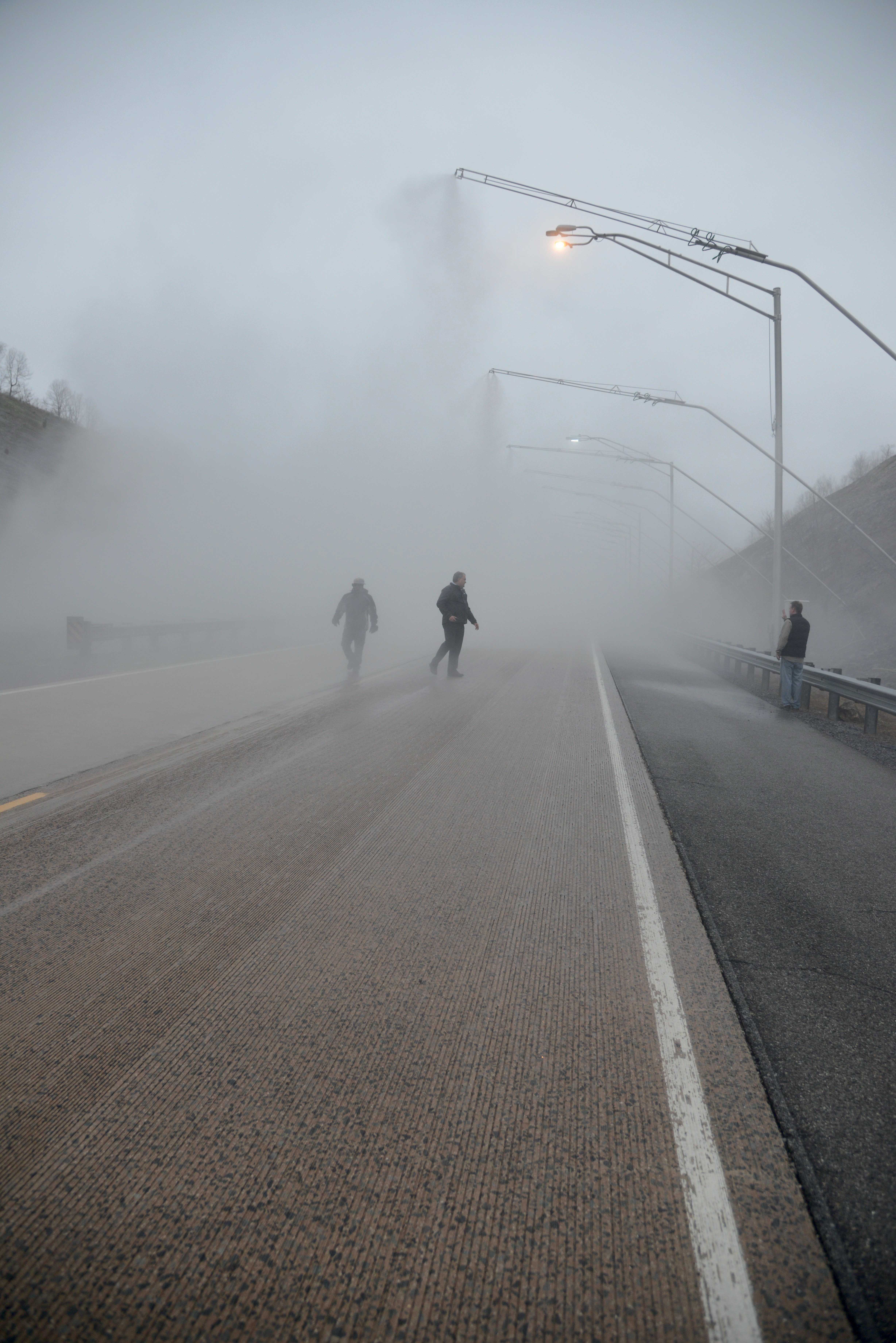
The Smart Road can be used to test the effects of various weather conditions
A test stretch of road in the US is playing a valuable role in developing technology and boosting traffic safety -*Tom Gibson writes
Located a short distance from the Virginia Tech campus in the mountains of rural southwest Virginia in the mid-Atlantic region of United States, the Virginia Smart Road looks like a conventional road. But venturing to either end of the 3.5km-long thoroughfare reveals that it actually goes nowhere, at least for now.
The result of a plan conceived back in the 1980s, the Virginia Smart Road is an innovative, state-of-the-art, closed test-bed research facility managed by the Virginia Tech Transportation Institute (VTTI) and owned and maintained by the5131 Virginia Department of Transportation (VDOT).
Perhaps the most innovative fact is that it will someday serve dual purposes. Today, it offers researchers and product developers a laboratory for testing new transportation technologies. Eventually, it will also provide the motoring public a direct four-lane route between Interstate-81 and Blacksburg to facilitate a link between Roanoke, 40km east, and Virginia Tech.
Tom Dingus, director of VTTI and a professor in the Civil and Environmental Engineering Department at Virginia Polytechnic Institute and State University, said the road actually goes a long way… to improving transportation technology, that is. “It has exceeded everybody’s expectations.” In 2013, the Smart Road logged the highest number of paid hours of research since its inception. “It’s getting more and more popular.” More than two dozen major non-proprietary research projects use the Smart Road for testing in a given year. Participating organisations include car manufacturers, the Department of Transportation, the2467 National Highway Traffic Safety Administration and the 2410 Federal Highway Administration 6269 Research and Innovative Technology Administration.
In building the Smart Road, Dave Clarke, resident engineer at VDOT’s Salem District Christiansburg Residency, who was involved in the design and construction, explained, “The techniques and construction were fairly standard. The grading work was done for four lanes, but just two lanes were paved.” However, Clarke explained that 13 different experimental pavement structures were laid. “Those were outfitted with sensors built into the road, and we did that in conjunction with Virginia Tech and their asphalt research group.” The pavement consisted of asphalt and stone with additives placed between the layers. Some had a fabric in between, others a drainage layer and another section has a woven wire mesh, all of which were added to test different pavement structures for strength and durability. Sensors, about 200 in total, were embedded during construction because they give a better reading that way than if you cut them into hard pavement.
Then the sensors were wired to a fibre-optic and electrical spine running down the road. “There are places to access electricity all up and down the road to underground connections and a fibre-optic section,” Clarke said. “If you want to put a new sensor in, you can plug it in; the wiring and everything is already there.”
Once the road was completed, tests were run by driving tractor trailers up and down it, with the sensors in the 13 different pavement sections gathering information on the stresses and strains within the pavement. This determined how the strain loads were being distributed and the effects of the additive layers on the road.
In reflecting on the finished product, Clarke related, “What we created was like a chemistry lab outfitted with a lot of stuff that researchers could do experiments with. What they like about it is that it’s not a track. It’s as close to a real-life situation as the researchers could get, which is why they like it.”
The Smart Road features three bridges, one of which ranks as the tallest state-maintained bridge in Virginia at 53.34m. It also has a signalised intersection, sensors for moisture, temperature, strain, vibration and weighing-in-motion, a lighting test bed and an 800m-long weather-making section that produces rain, snow and fog for testing. The list of features goes on: an on-site data acquisition system, a high-bandwidth fibre network, a differential GPS base station, and traffic signal phase and timing using remote controls. Zac Doerzaph, director of the Center for Advanced Automotive Research at VTTI, said, “The Smart Road provides a facility for testing transportation systems because it is limited to research yet is built to the standards of an actual interstate.”
To operate the Smart Road, VTTI employs a team of multidisciplinary researchers, engineers, technicians, support staff, and students. They recruit Virginia Tech electrical and mechanical engineering students as graduate research assistants to serve as employees.
Having been in operation for 20 years, the Smart Road has accrued a list of accomplishments that have made their way into today’s production vehicles. Doerzaph said, “We have influenced technologies such as forward collision warnings, backing cameras, and crash imminent braking wherein the vehicle will automatically apply the brakes to avoid a crash.” Another technology is adaptive cruise control, which uses forward-looking radar to detect the speed and distance of the vehicle ahead of it and to maintain the vehicle’s preset speed but automatically adjusts the speed to maintain a proper distance between vehicles in the same lane. And connected vehicles are equipped with low-latency dedicated short-range communications (DSRC) and GPS, so they can communicate with each other as well as the infrastructure. If a car is in a collision, it can alert the driver or apply the brakes and bring the vehicle to a stop.
As another emerging technology, Dingus points to automated cars. “The next generation is working on lane-centring systems, where you can actually drive hands off the wheel, and if the car sees an obstacle in front, it will brake to avoid a crash. Those are coming out very soon; in the next few years, they’ll be in production.”
Planning for the Smart Road actually began as far back as 1985. In early 1992, VDOT began designing it, working closely with the Federal Highway Administration and Virginia Tech’s Center for Transportation Research. Groundbreaking took place in 1997, and construction on the current section was completed in 2002.
The timetable for extending the road to become part of the public transportation system will depend on growing traffic demands on the Route 460 Bypass nearby and state and federal transportation funding. It will eventually become 9.6km of four-lane road designed and built in a series of test beds with the ability to shut down two lanes in off-peak hours for testing.
As it continues to play out, this innovative public-private-academic project should continue to advance transportation technology for years to come.
Located a short distance from the Virginia Tech campus in the mountains of rural southwest Virginia in the mid-Atlantic region of United States, the Virginia Smart Road looks like a conventional road. But venturing to either end of the 3.5km-long thoroughfare reveals that it actually goes nowhere, at least for now.
The result of a plan conceived back in the 1980s, the Virginia Smart Road is an innovative, state-of-the-art, closed test-bed research facility managed by the Virginia Tech Transportation Institute (VTTI) and owned and maintained by the
Perhaps the most innovative fact is that it will someday serve dual purposes. Today, it offers researchers and product developers a laboratory for testing new transportation technologies. Eventually, it will also provide the motoring public a direct four-lane route between Interstate-81 and Blacksburg to facilitate a link between Roanoke, 40km east, and Virginia Tech.
Tom Dingus, director of VTTI and a professor in the Civil and Environmental Engineering Department at Virginia Polytechnic Institute and State University, said the road actually goes a long way… to improving transportation technology, that is. “It has exceeded everybody’s expectations.” In 2013, the Smart Road logged the highest number of paid hours of research since its inception. “It’s getting more and more popular.” More than two dozen major non-proprietary research projects use the Smart Road for testing in a given year. Participating organisations include car manufacturers, the Department of Transportation, the
In building the Smart Road, Dave Clarke, resident engineer at VDOT’s Salem District Christiansburg Residency, who was involved in the design and construction, explained, “The techniques and construction were fairly standard. The grading work was done for four lanes, but just two lanes were paved.” However, Clarke explained that 13 different experimental pavement structures were laid. “Those were outfitted with sensors built into the road, and we did that in conjunction with Virginia Tech and their asphalt research group.” The pavement consisted of asphalt and stone with additives placed between the layers. Some had a fabric in between, others a drainage layer and another section has a woven wire mesh, all of which were added to test different pavement structures for strength and durability. Sensors, about 200 in total, were embedded during construction because they give a better reading that way than if you cut them into hard pavement.
Then the sensors were wired to a fibre-optic and electrical spine running down the road. “There are places to access electricity all up and down the road to underground connections and a fibre-optic section,” Clarke said. “If you want to put a new sensor in, you can plug it in; the wiring and everything is already there.”
Once the road was completed, tests were run by driving tractor trailers up and down it, with the sensors in the 13 different pavement sections gathering information on the stresses and strains within the pavement. This determined how the strain loads were being distributed and the effects of the additive layers on the road.
In reflecting on the finished product, Clarke related, “What we created was like a chemistry lab outfitted with a lot of stuff that researchers could do experiments with. What they like about it is that it’s not a track. It’s as close to a real-life situation as the researchers could get, which is why they like it.”
The Smart Road features three bridges, one of which ranks as the tallest state-maintained bridge in Virginia at 53.34m. It also has a signalised intersection, sensors for moisture, temperature, strain, vibration and weighing-in-motion, a lighting test bed and an 800m-long weather-making section that produces rain, snow and fog for testing. The list of features goes on: an on-site data acquisition system, a high-bandwidth fibre network, a differential GPS base station, and traffic signal phase and timing using remote controls. Zac Doerzaph, director of the Center for Advanced Automotive Research at VTTI, said, “The Smart Road provides a facility for testing transportation systems because it is limited to research yet is built to the standards of an actual interstate.”
To operate the Smart Road, VTTI employs a team of multidisciplinary researchers, engineers, technicians, support staff, and students. They recruit Virginia Tech electrical and mechanical engineering students as graduate research assistants to serve as employees.
Having been in operation for 20 years, the Smart Road has accrued a list of accomplishments that have made their way into today’s production vehicles. Doerzaph said, “We have influenced technologies such as forward collision warnings, backing cameras, and crash imminent braking wherein the vehicle will automatically apply the brakes to avoid a crash.” Another technology is adaptive cruise control, which uses forward-looking radar to detect the speed and distance of the vehicle ahead of it and to maintain the vehicle’s preset speed but automatically adjusts the speed to maintain a proper distance between vehicles in the same lane. And connected vehicles are equipped with low-latency dedicated short-range communications (DSRC) and GPS, so they can communicate with each other as well as the infrastructure. If a car is in a collision, it can alert the driver or apply the brakes and bring the vehicle to a stop.
As another emerging technology, Dingus points to automated cars. “The next generation is working on lane-centring systems, where you can actually drive hands off the wheel, and if the car sees an obstacle in front, it will brake to avoid a crash. Those are coming out very soon; in the next few years, they’ll be in production.”
Planning for the Smart Road actually began as far back as 1985. In early 1992, VDOT began designing it, working closely with the Federal Highway Administration and Virginia Tech’s Center for Transportation Research. Groundbreaking took place in 1997, and construction on the current section was completed in 2002.
The timetable for extending the road to become part of the public transportation system will depend on growing traffic demands on the Route 460 Bypass nearby and state and federal transportation funding. It will eventually become 9.6km of four-lane road designed and built in a series of test beds with the ability to shut down two lanes in off-peak hours for testing.
As it continues to play out, this innovative public-private-academic project should continue to advance transportation technology for years to come.

